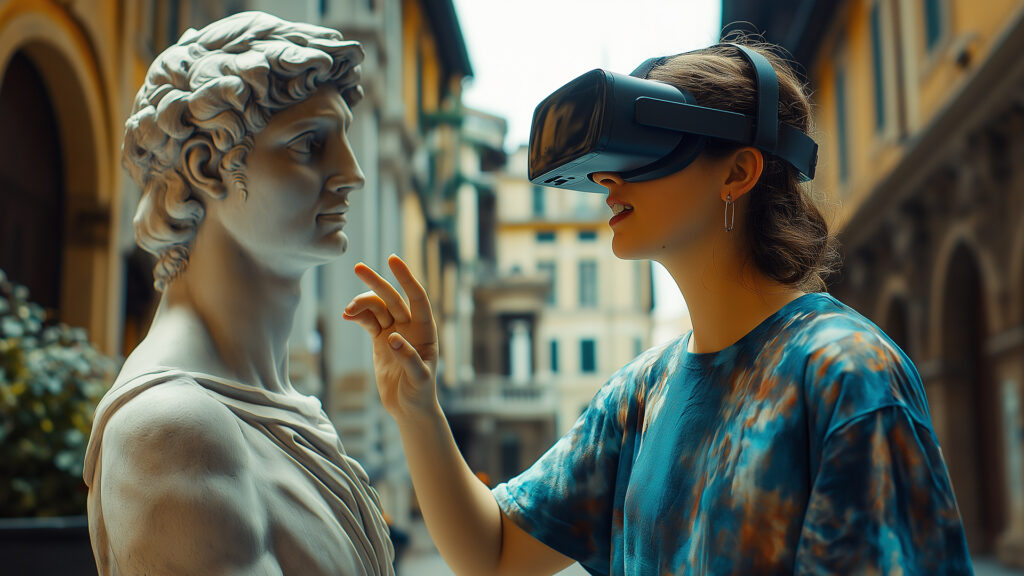Like other industries, the cultural heritage sector is also affected by digital transformation. In national and international cultural institutions, efforts are being made to predict the impact of Artificial Intelligence on museums, libraries, historical archives, churches, monuments and archaeological sites. Some solutions for safeguarding and cataloging cultural heritage using AI have already been implemented and…
AI and cultural heritage
Technologies have long been promoting and changing the experience of visiting museums, including by creating new digital attractions. If the Web and social media have already become the main channel of information access to cultural heritage, the advent of artificial intelligence, connoted as cognitive technology, could have even more profound repercussions. Text and image recognition,…
The extended museum is a “phygital” museum, i.e., physical and digital together, thus extending into the network and the synthetic world, and through these it opens up to society and the territory, using immersive technologies and artificial intelligence. The two worlds, physical and artificial, meet inside and outside the museum, before, during and after the…
There are numerous examples of digitized museums, i.e., enriched by technological solutions, but entirely digital museums, i.e., without physical exhibits, are also becoming more common today. The all-digital museum omits the function of artifact preservation (which it lacks), while enhancing the communicative and cognitive function: it thus becomes akin to a technological palace dedicated to…
The museum, thanks to the network and synthetic simulations, comes out of its enclosed space and pervades the territory, for example, by virtually relocating artifacts back to their original context, where, conversely, an immersive stargate opens, virtually bringing one back into the museum. Museums thanks to digital enter schools, universities, become internationalized by engaging new…
Immersive exhibitions are one of the most recent and vibrant phenomena in the modern culture industry, and they are gaining popularity for their ability to effectively engage a wider audience than conventional exhibitions. The creation of video installations is certainly not new, as it can be traced back to the video art of the 1970s,…
Local art and history, often enshrined in museums, churches, and historic homes, can be regenerated by Artificial Intelligence. Thanks to the “Regenerative Arts” techno-methodology, the style of artists of the past is reactivated to recreate unprecedented scenes. “Regenerative Arts” consists of a rigorous approach for “regenerative” (not simply “generative”) artificial intelligence. In essence that form…
In contrast, the “Regenerative History” techno methodology has different goals: it is dedicated to the reconstruction of historical and archaeological scenes, aiming for maximum scientific rigor. With the artificial intelligence technologies of “Regenerative History” characters and peoples whose records had been lost. Again, scientific and linguistic rigor is crucial, and the support of specialized scholars…
“History (from Greek ἱστορία, historìa, [visual] inspection) is the discipline that deals with the study of the past through the use of sources, that is, anything that, by configuring itself as a document, can transmit knowledge.” (Europeana) The story was predominantly experienced as a written narrative. However, virtual reconstruction technologies now lead us to explore…
The advent of AI is rapidly revolutionizing the field of virtual archaeological reconstructions, which have hitherto been carried out using settings with costumed sets and extras or 3D technology. 3D technology, especially when integrated on the photogrammetric reproduction of the archaeological site, offers greater scientific rigor. But the rapid evolution of generative artificial intelligence already…
- 1
- 2


